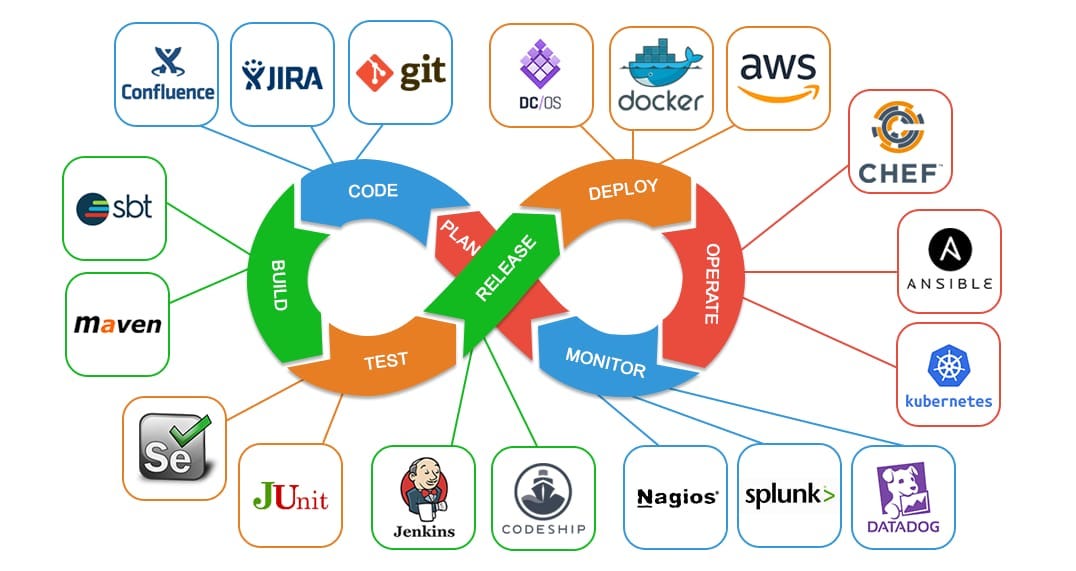DevOps Best Practices for Faster, Scalable Releases in 2025
 Bridge Group Solutions
Bridge Group Solutions
Overview
Speed and scalability are now essential for remaining competitive in the rapidly evolving field of software development. DevOps can help with that. It allows teams to deliver software more quickly, reliably, and at scale by bridging the gap between development and operations. Adopting DevOps tools alone, however, is insufficient. Organizations must adopt best practices that encourage cooperation, automation, and continuous improvement if they want to fully reap its benefits. This guide outlines the best practices for accelerating and scaling software releases, regardless of whether you're just starting out or are improving your DevOps pipeline in 2025.
1. Adopt Continuous Delivery and Continuous Integration (CI/CD)
CI/CD is the epitome of automation, which is at the core of DevOps. In order for automated tests and builds to detect problems early, continuous integration makes sure that developers consistently merge code changes into a shared repository. Continuous Delivery goes one step further by automating the release process to enable safe and speedy code deployment to production.
Best Practices:
Use contemporary tools (such as GitHub Actions, GitLab CI, Jenkins, and CircleCI) to automate builds, tests, and deployments.
To manage the release of new features without requiring code rollbacks, use feature toggles.
To identify problems early, make sure automated testing is started with each commit.
Why it matters:
Team confidence in regularly shipping code is increased and risk is decreased with faster, smaller releases.
2. Automate Your Environments with Infrastructure as Code (IaC)
Infrastructure management done by hand takes a lot of time and is prone to mistakes. Teams can use code to define cloud infrastructure with Infrastructure as Code (IaC), which makes it easily deployable, repeatable, and versionable.
Best Practices:
To manage infrastructure, use programs like Terraform, Pulumi, or AWS CloudFormation.
Alongside the application code, keep IaC templates in version control.
Use pre-deployment tests and CI pipelines to validate infrastructure changes.
Why it matters:
IaC supports scalable infrastructure across development, testing, and production environments, speeds up environment provisioning, and guarantees consistency.
3. Turn Testing and Security to the Left
Problems are easier and less expensive to fix the earlier you identify them. Testing and security are being integrated early in the development cycle by DevOps teams, which are moving to the left more and more.
Best Practices:
Automate end-to-end, integration, and unit tests as part of the continuous integration pipeline.
Use tools for dependency scanning and static code analysis (e.g., SonarQube, Snyk, Checkmarx).
Make use of policy enforcement and container security tools (such as Trivy, Aqua, and OPA/Gatekeeper).
Why it matters:
Production incidents are decreased and release confidence is raised when bugs and vulnerabilities are discovered early.

4. Constantly Keep an Eye on Everything
If something breaks and no one notices, a quick release is pointless. Observability is a fundamental DevOps discipline in 2025; it is not an optional one.
Best Practices:
Track metrics, logs, and traces with tools like Prometheus, Grafana, Datadog, or New Relic.
Configure dashboards and alerts for vital services and release health.
Monitor user impact, error rates, latency, and deployment performance.
Why it matters:
Teams can respond to problems more quickly and enhance systems based on actual usage with the aid of real-time insights.
5. Employ Containerization and Microservices
Microservices, which are separate services that interact through APIs, are frequently used in scalable systems. When you combine that with orchestrators (like Kubernetes) and containers (like Docker), you have an extremely flexible and scalable infrastructure.
Best Practices:
To ensure consistent deployment across environments, containerize applications.
To scale services automatically, use orchestration tools such as Kubernetes.
To improve fault isolation and maintainability, decouple services.
Why it matters:
Containers and microservices facilitate horizontal application scaling and enable quicker deployment.
Conclusion: Shared Ownership and Intelligent Automation Are Key
By 2025, DevOps is the cornerstone of contemporary software development and is no longer a specialized methodology. However, automation isn't the only factor in success. It results from consistently implementing best practices, which include automating repeatable tasks, testing frequently, treating infrastructure like code, keeping an eye on things intelligently, and fostering an environment that promotes learning and teamwork.
Incorporating these DevOps best practices into your development process will not only speed up release times but also result in systems that are scalable and flexible.
Subscribe to my newsletter
Read articles from Bridge Group Solutions directly inside your inbox. Subscribe to the newsletter, and don't miss out.
Written by

Bridge Group Solutions
Bridge Group Solutions
Bridge Group Solutions delivers expert IT outsourcing services, helping businesses accelerate software development with cutting-edge technology and skilled teams. We specialize in integrating AI-driven tools and agile workflows to boost productivity and innovation.